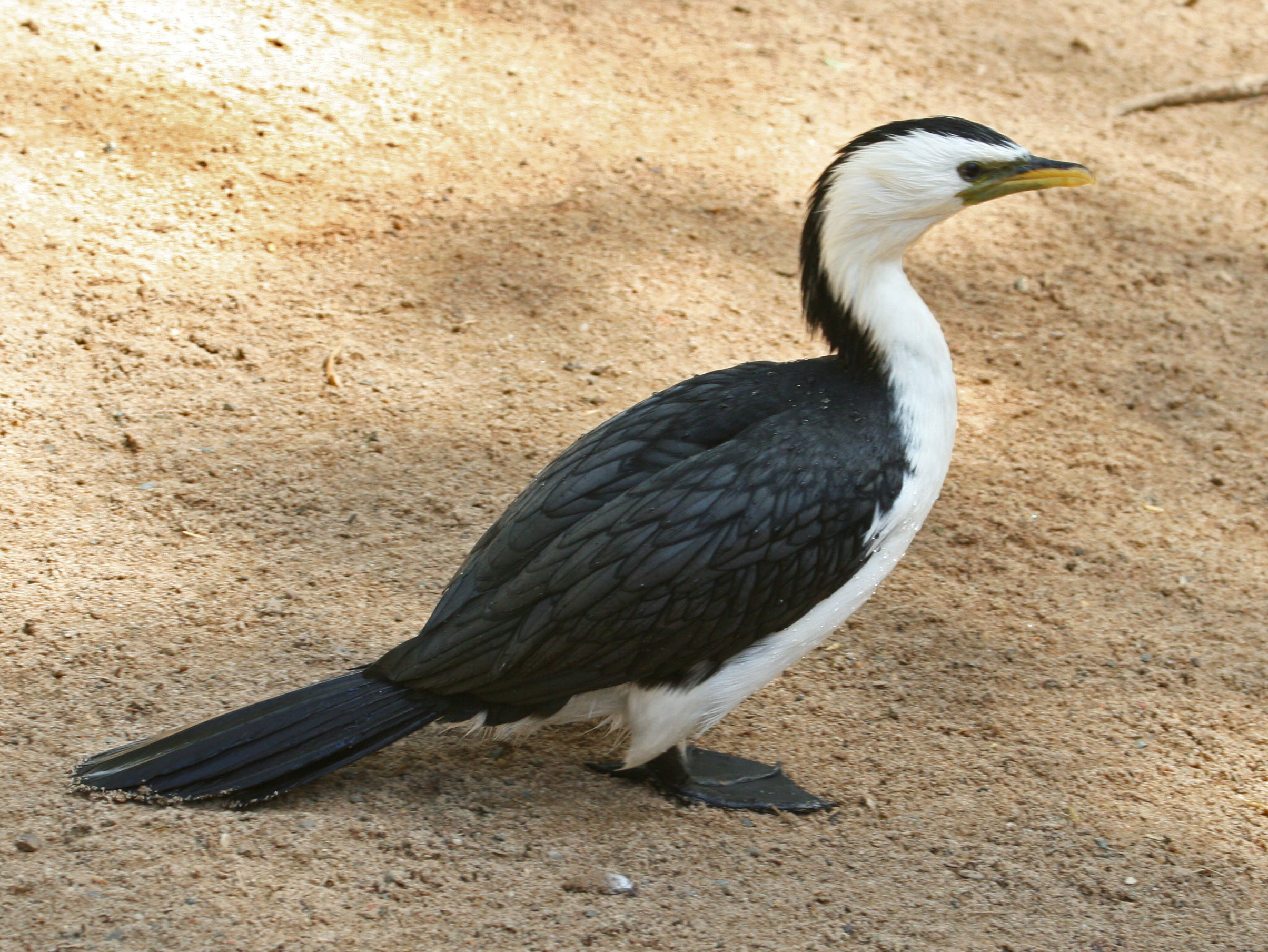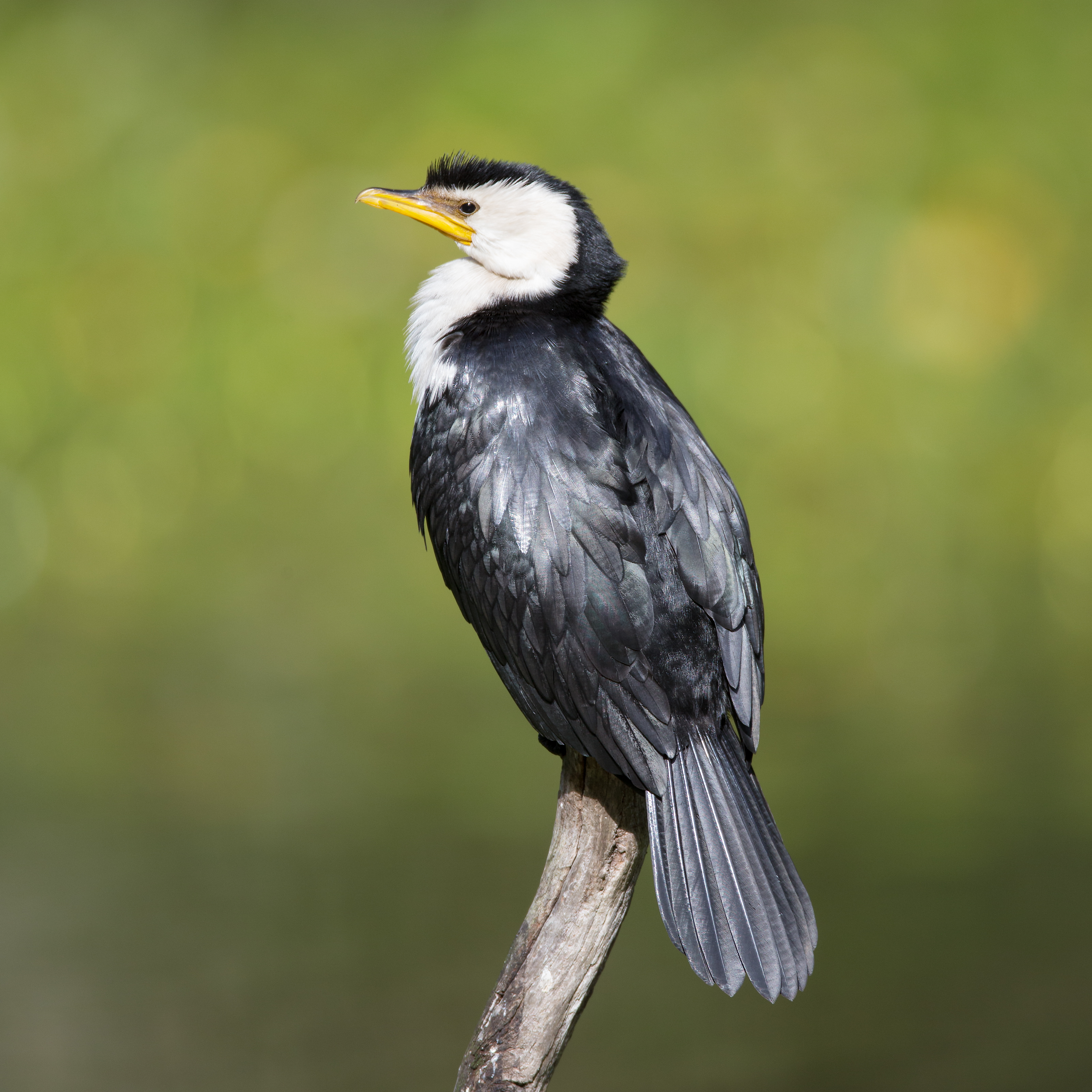The Little Pied Cormorant is likely one of the most common of Australia’s waterbirds, occurring on water our bodies of just about any size.
Little Pied Cormorant Profile
The Little Pied Cormorant is discovered all through Australia. The little pied cormorant, little shag, or kawaupaka (Microcarbo melanoleucos) is a common Australasian waterbird, discovered around the coasts, islands, estuaries, and inland waters of Australia, New Guinea, New Zealand, and Indonesia, and around the islands of the south-western Pacific and the subantarctic.
Little Pied Cormorant is a small short-billed cormorant often black above and whites below with a yellow bill and small crest, though a principally black white-throated type predominates in New Zealand. Three subspecies are recognized. Until not too long ago most authorities referred to this species as Phalacrocorax melanoleucos.
The Little Pied Cormorant is at home in both contemporary or saltwater. It is usually seen in giant flocks on open waterways and on the coast, particularly the place giant numbers of fish are present.
On inland streams and dams, nonetheless, it’s usually solitary. The Little Pied Cormorant mixes readily with the equally sized Little Black Cormorant, P. sulcirostris.
Little Pied Cormorants feed on all kinds of aquatic animals, from bugs to fish. On inland streams and dams they turn to their most favored meals: yabbies (freshwater crayfish).
These are caught by deep underwater dives with each foot kicking outward in unison. Other crustaceans are additionally taken, with shrimps being a big part of their diet in the winter months.
Distribution and habitat
The species ranges throughout New Zealand, from Stewart Island to Northland, and throughout mainland Australia (though not within the arid inside of the west of the nation) and Tasmania and Indonesia.
Widespread and common, it lives close to our bodies of water akin to swamps, lakes, lagoons, estuaries, and the shoreline.
Little Pied Cormorant Description
The little pied cormorant is a small cormorant measuring 56–58 cm (22–23 in) with a shorter 3 cm (1.2 in) bill and a longer tail than the little black cormorant; it has a small black crest.
Little Pied Cormorant is present in two morphs in New Zealand. Subspecies melanoleucos and brevicauda are discovered solely in a pied morph, black (with a slight green tinge) above and white beneath.
This can also be present in subspecies brevirostris, however, on this type the melanistic morph is far more common. In this manner your entire plumage is black with a greenish tinge apart from the sides of the head, chin, throat, and higher neck; the bill is yellow with black on top. Intermediate varieties are additionally discovered.
The pied type is shiny black above with a white face, underparts, and thighs. The bill and naked skin around the face is yellow. In each variety the legs and feet are black.
The pied type is uncommon in New Zealand and is most common there in Northland, the place it makes up one in every 4 birds or so.
Chicks have darkish brown down, with pied morph having patches of paler down. Immature birds are a boring blackish-brown, with pied morph birds having paler underparts.
The little pied cormorant makes a low cooing throughout courtship.
Similar species embrace the black-faced cormorant (barely bigger) and the Australian pied cormorant (considerably bigger).
Identification
The Little Pied Cormorant is totally black above and whites below. The face is dusky and, in adult birds, the white of the underside extends to above the attention. Immature birds resemble adults besides there is no such thing as a white above the attention.
Little Pied Cormorant Feeding behavior
The little pied cormorant is a benthic feeder, i.e. it finds its prey on the ocean ground. It is a solitary feeder, usually diving in comparatively shallow water, usually close to the shore.
Dive instances are short, around 15 to twenty seconds, with restoration instances on the floor of 5 to 10 seconds except prey are being swallowed.
Little Pied Cormorant takes quite a lot of fish prey however an unusually high proportion (practically 30% by weight on average, and as much as 80% in some people) of crustaceans.
In New Zealand waters it’s most frequently seen preying on the native flounder and different small flatfish.
Eels and bug larvae are additionally consumed. These are delivered to the floor to be swallowed: the bird will typically put a fish down on the floor of the water with a view to re-orient it and swallow it headfirst. Because of this behavior, they endure some kleptoparasitism from red-billed gulls.
Little Pied Cormorant Breeding
Little Pied Cormorants breed both in colonies or, much less generally, in single pairs. The nest is a flat platform of sticks, lined with green leaves, and is often positioned in a tree. Both adults share in egg incubation and care of the younger.
Breeding happens as soon as a year in the spring or early summer season in the southern areas of its range (southern Australia and New Zealand), and after the monsoon in tropical areas.
The nest is a platform constructed of branches and sticks, usually nonetheless green with leaves within the forks of bushes, often eucalypts that can be standing in water.
Nests are sometimes positioned close to different waterbirds akin to different cormorants, herons, ibises, or spoonbills. Four or 5 pale blue oval eggs measuring 46 x 31 mm are laid.
The eggs are lined with a skinny layer of lime, giving them a matte white-coated look. They change into more and more stained with faeces, as does the nest, over the period of the breeding season.
Clutch size: 3 to 4
More Interesting Articles
- Black Legged Kittiwake – Facts| Juvenile | Range| Flight
- Pigeon Guillemot – Facts | Juvenile | Migration | Range
- Pelagic Cormorant – Facts | Range | Migration | Ecology
- Tufted Puffin – Diet | Habitat | Lifespan | Adaptations
- Horned Puffin – Size | Facts | Habitat | Diet | Sound
- Atlantic Puffin – Facts, Size, Habitat, Nesting, Breeding
- Spix’s macaw – Facts | Size | Habitat | Lifespan | Population
- Black-throated Sparrow – Songs | Range | Facts | Juvenile
- Hyacinth Macaw Profile, Traits, Facts, Care, Breeding
- American Coot – Foot | Baby | Duck | Juvenile | Egg | Habitat
- Canada Goose bird Facts, Traits and Symbols
- African Grey Parrot Lifespan – What you need to know
- Spix Macaw Extinct – Is Spix Macaw on brink of extinction?
- Laysan Albatross – Lifespan and Wisdom
- Amazon Parrot Lifespan – Factors that affect Longevity
- Birds of the Mojave Desert
- Cactus wren Bird Profile, Traits, Diet, Care, Facts
- Kakapo Parrot – Flightless Parrot from New Zealand
- American Avocet Bird – Facts | Range | Habitat
- Black Winged Stilt Profile | Traits | Care | Information




